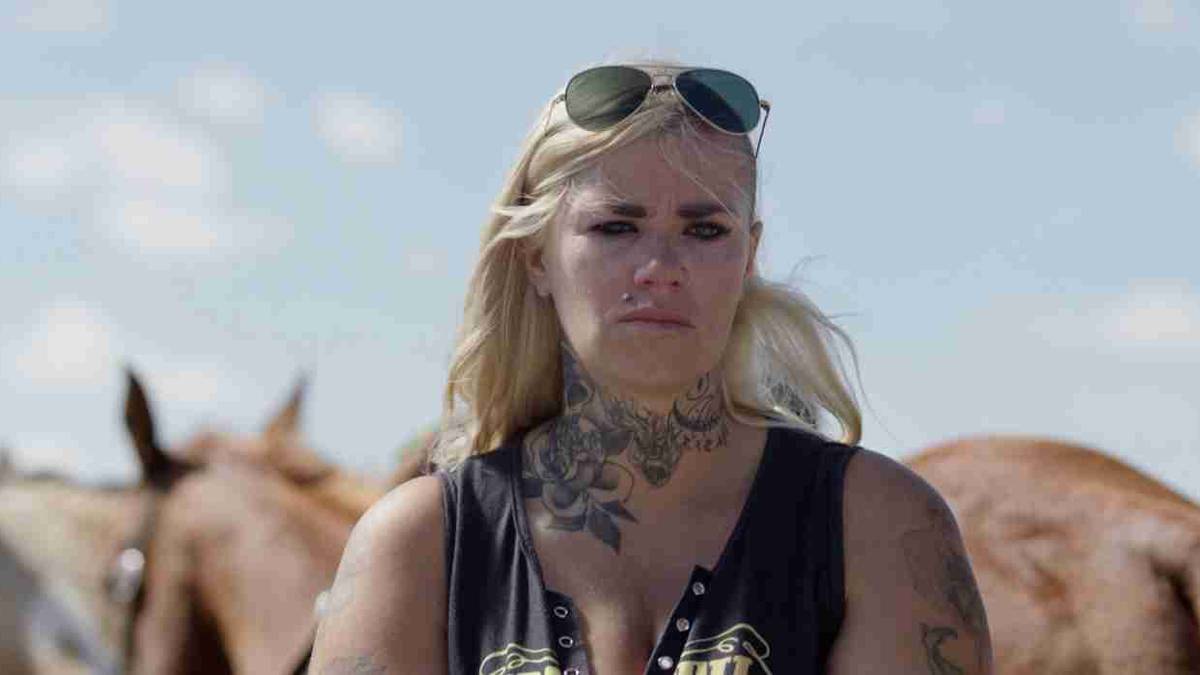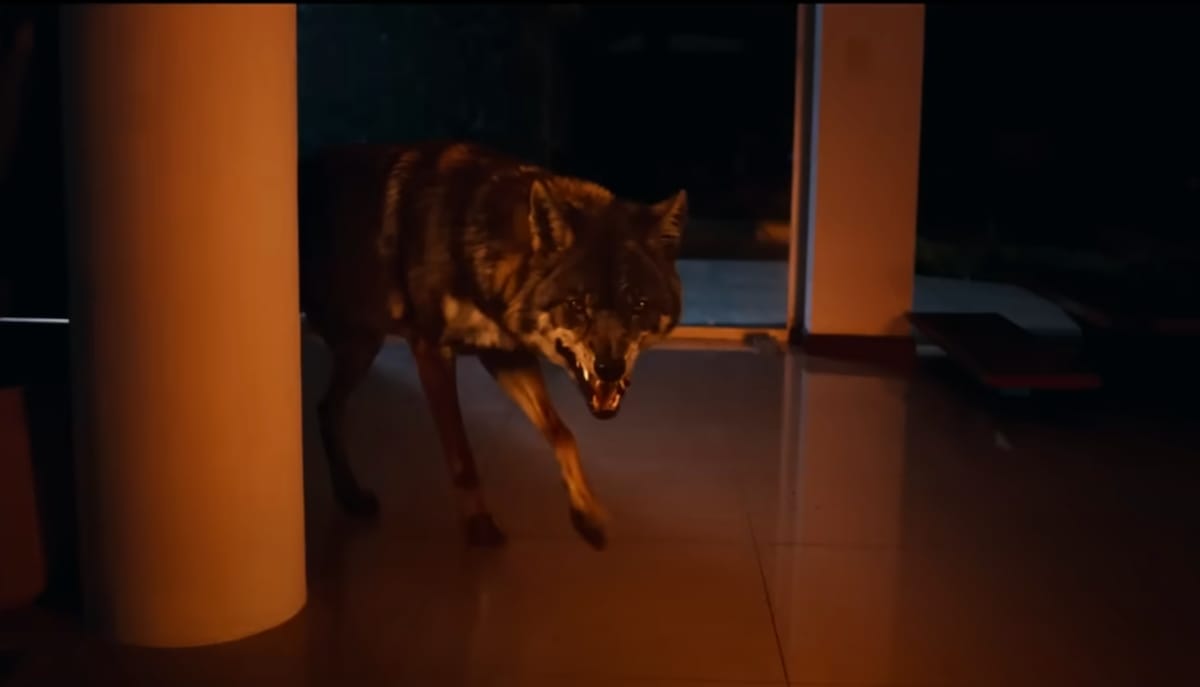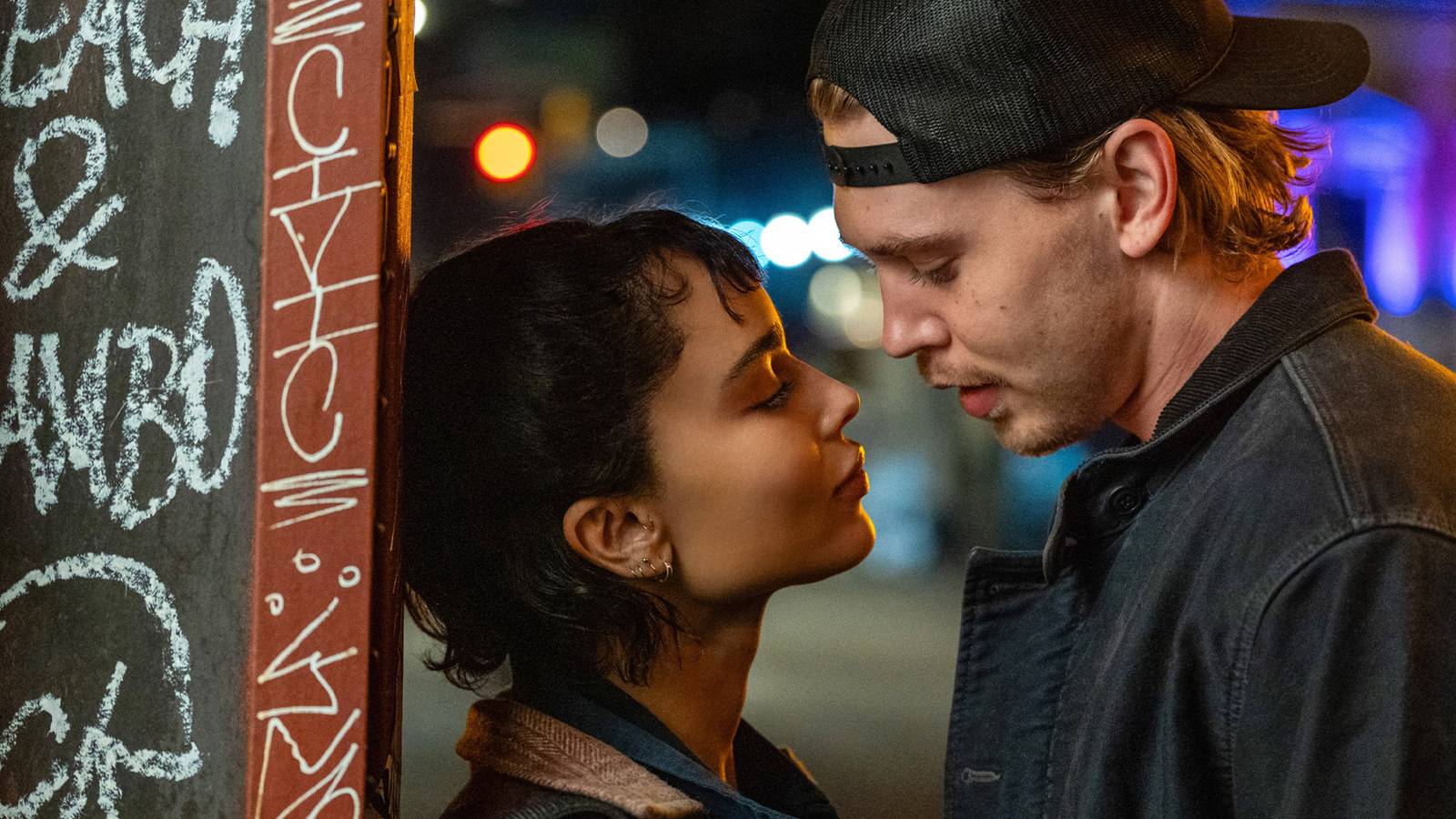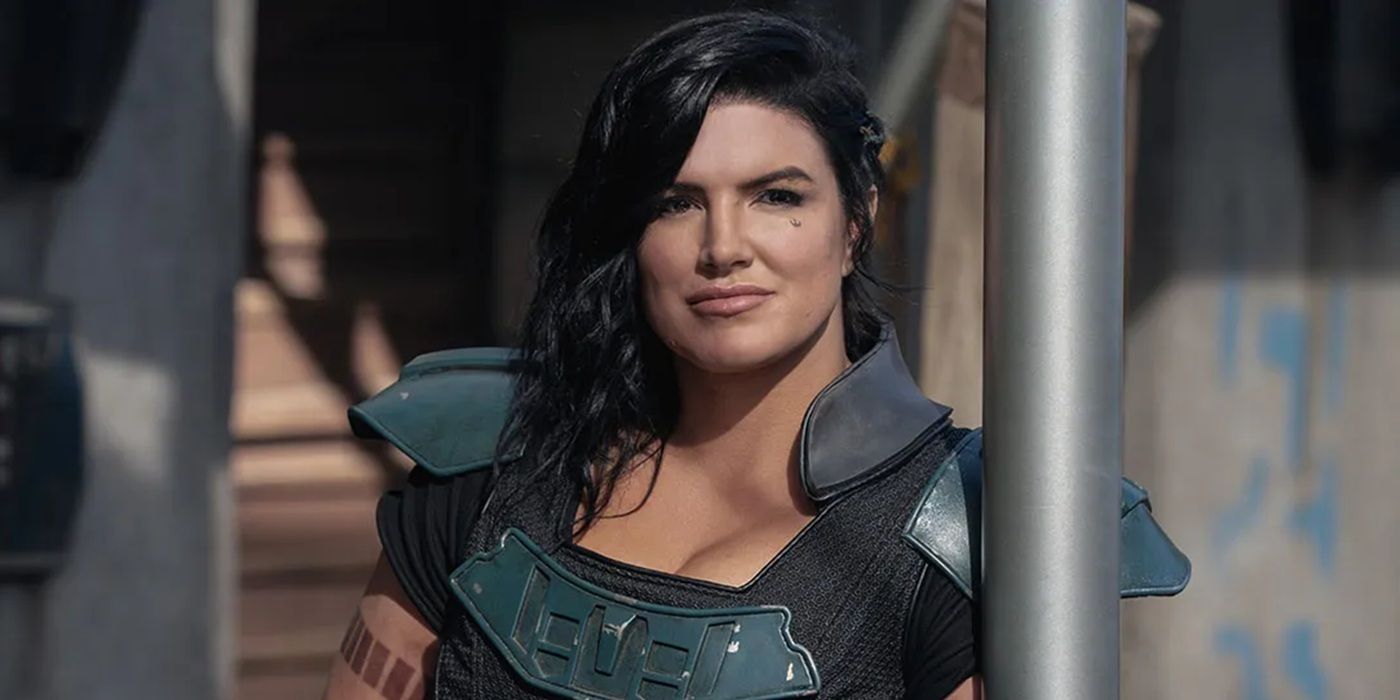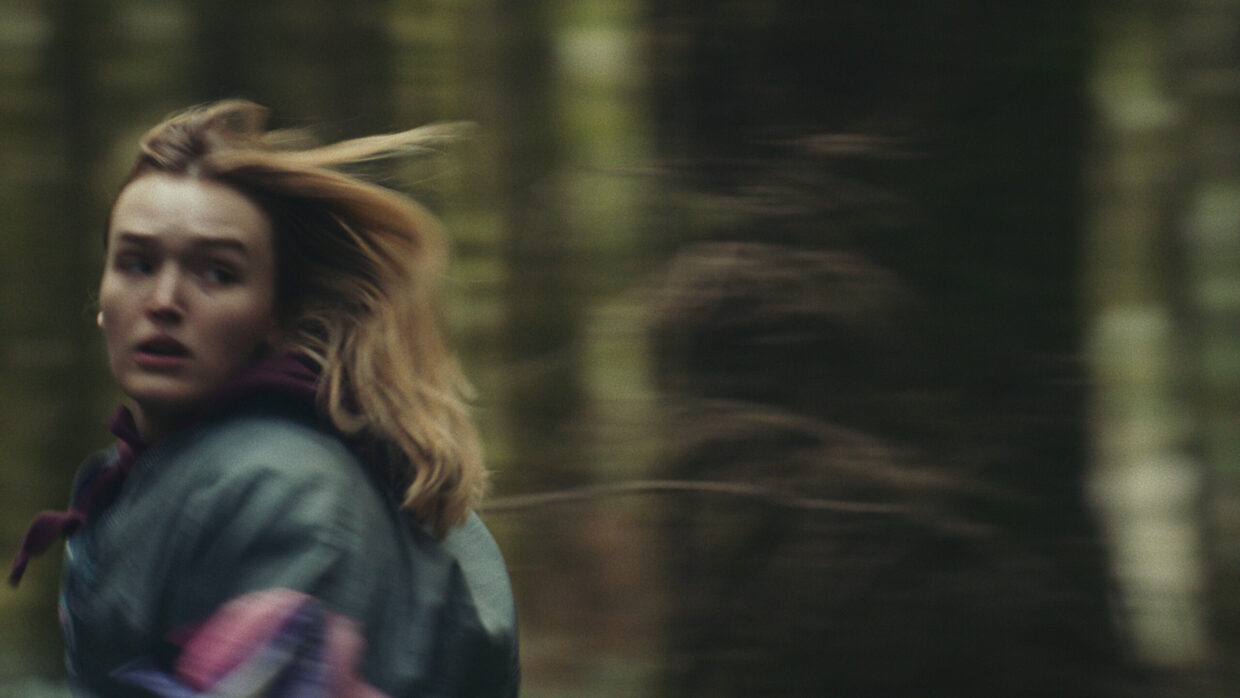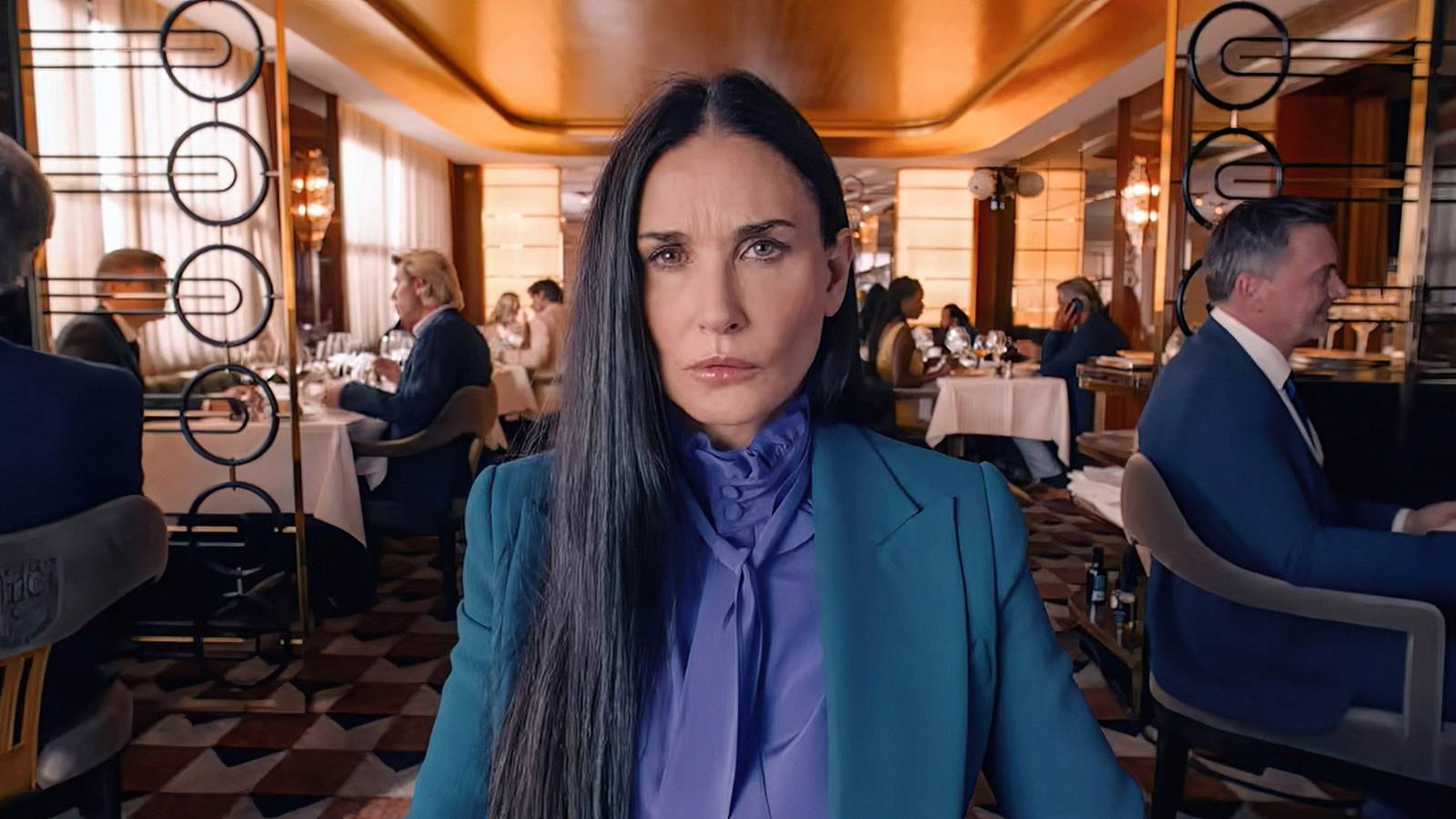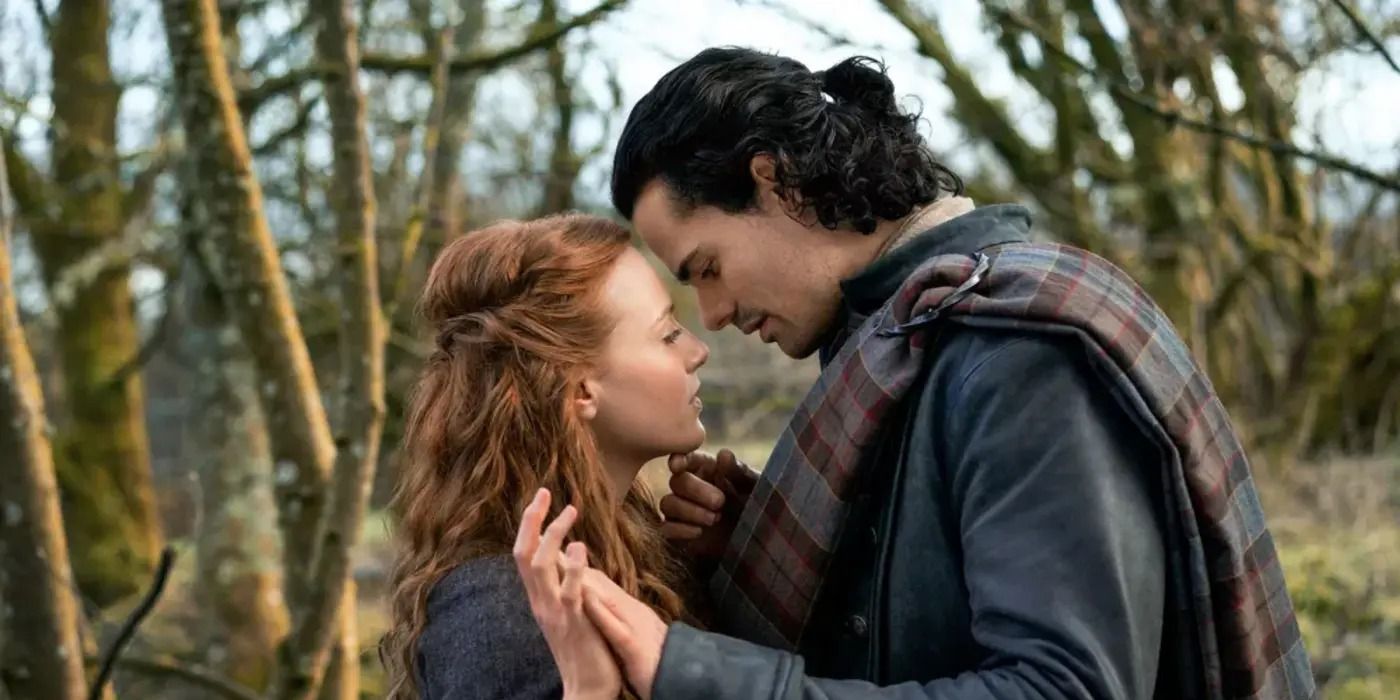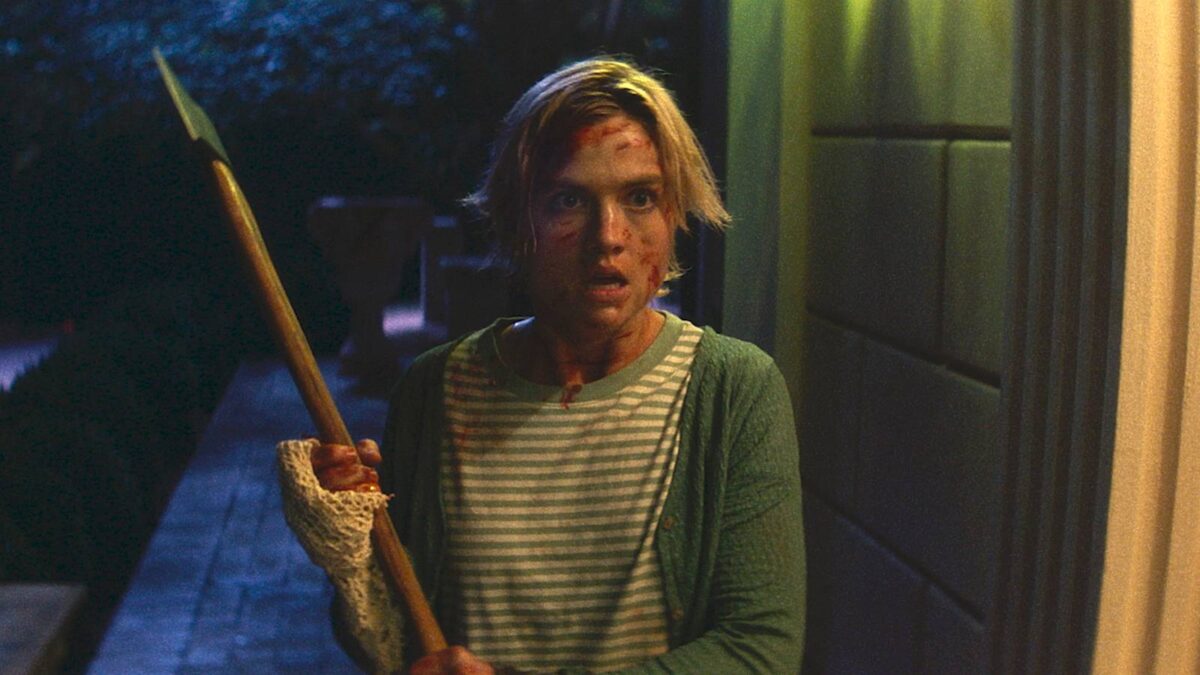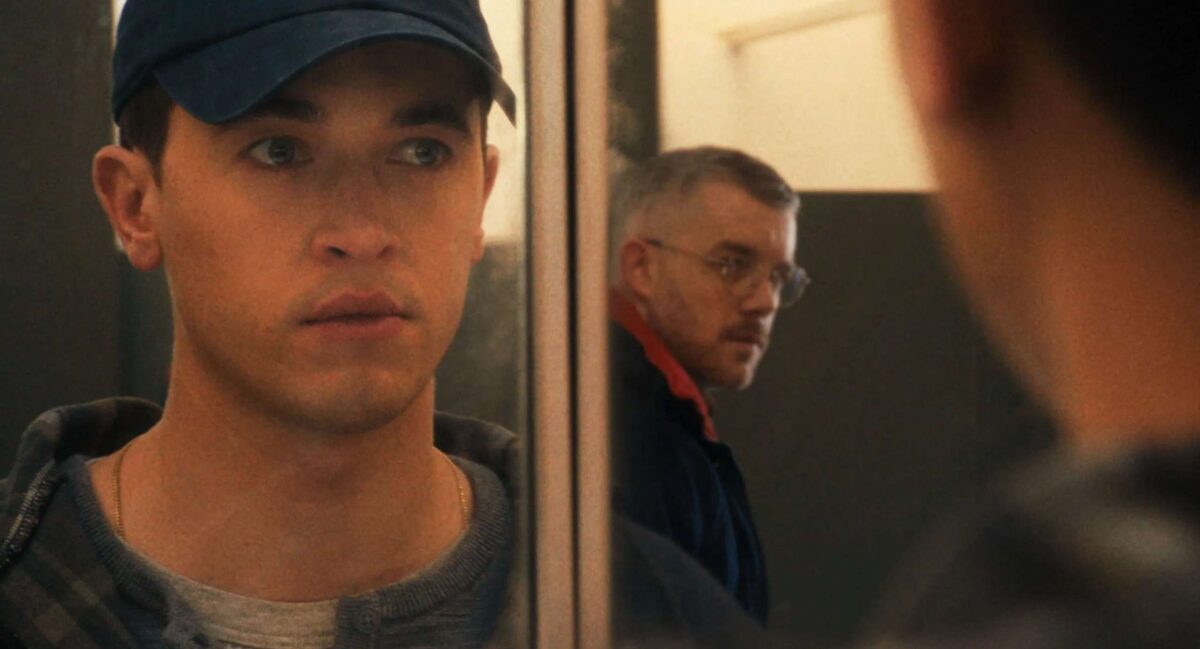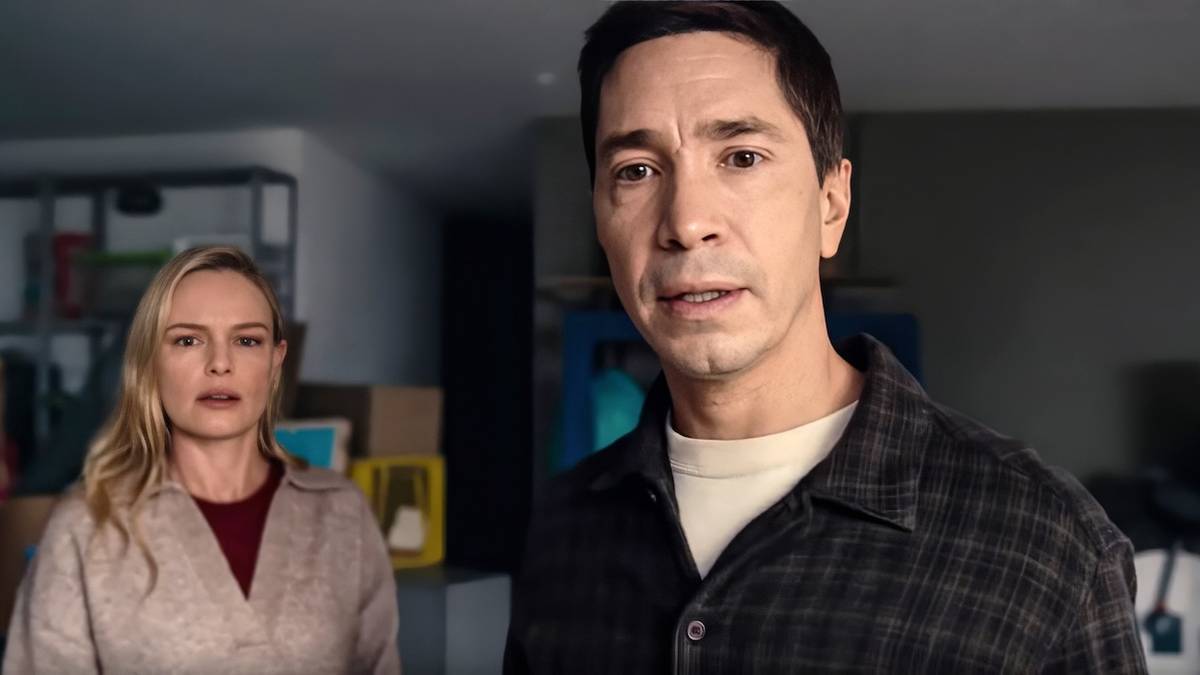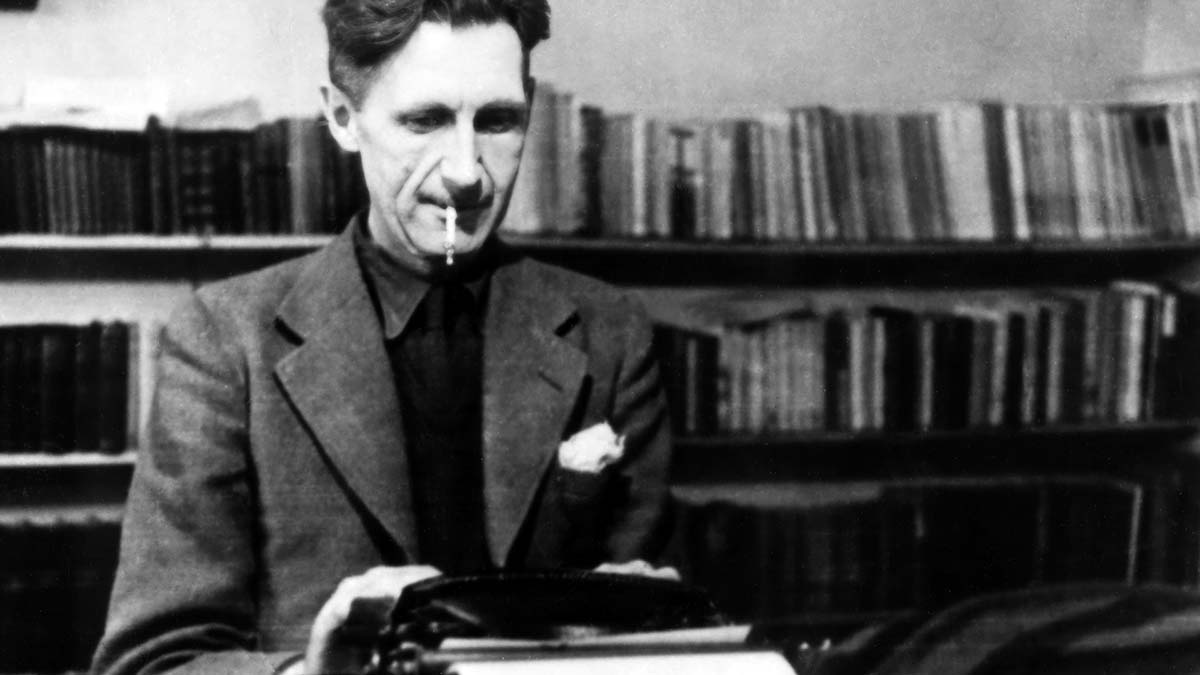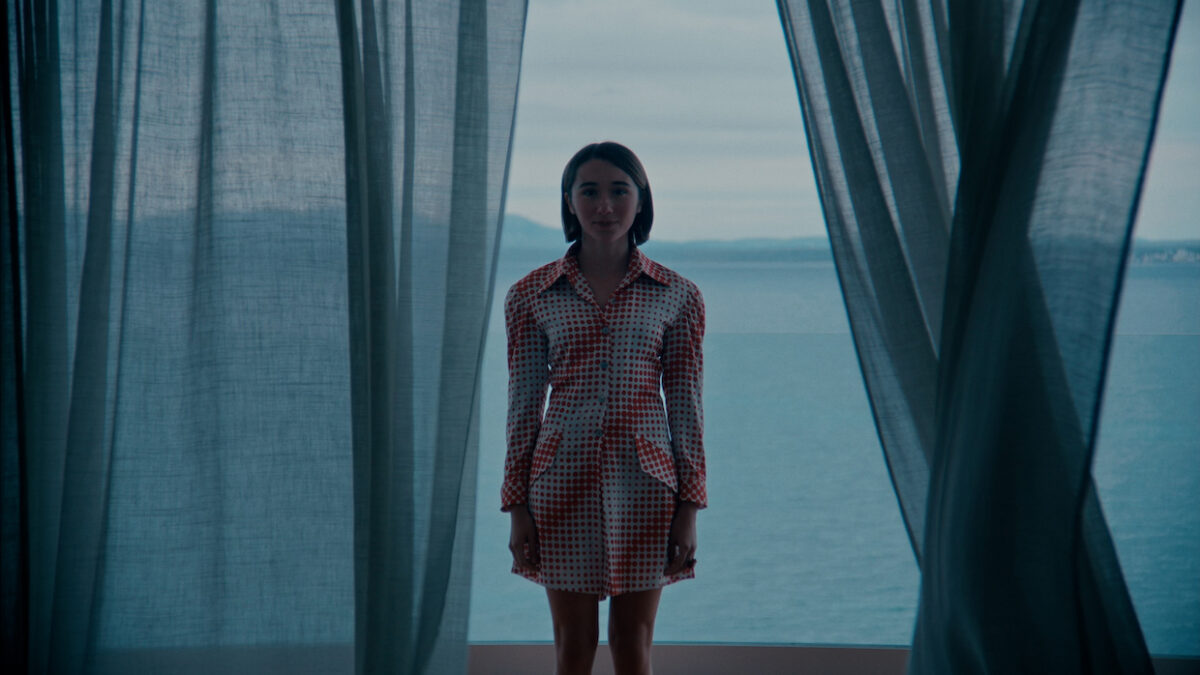
âGrief in a Beautiful Placeâ: LucÃa Aleñar Iglesias on Her TIFF World Premiere Forastera
Sep 23, 2025
Forastera
The carefree, meandering pace of summertime suddenly takes the form of a depressive stupor in Forastera, the feature debut from Los Angeles-based, Spanish-born writer-director Lucía Aleñar Iglesias. During an annual vacation to visit their maternal grandparents in Mallorca, Cata (Zoe Stein) and Eva (Martina García) engage in typical teenage shenanigans: they aimlessly ride bikes along the coast, go to beach bonfire parties and flirt with the boys they encounter there. Basically, all is as it should be—at least until the day that Cata discovers her grandmother’s unresponsive body. The girls’ mother Pepe (Núria Prims) arrives in order to help with the funeral and general grieving rites, but finds herself rebuffed by her own father, Tomeu (Lluís Homar), who suddenly only wants to communicate through Cata. After all, his late wife is the young woman’s namesake, and the parallels between the two are only further highlighted when she tries on a vintage mod dress from the back of her grandmother’s closet. Of course, it’s a perfect fit.
Thus generational lines blur, a rift that causes Pepa to regress into adolescent brattiness and Tomeu to bicker with Cata as if she were his wife. While these projections are rooted in individual psychological responses to the matriarch’s passing, a certain spiritual presence is undoubtedly lingering in the familial home, which itself feels unchanged from the pastel fashions of the late 20th century. Every so often, the glint of a light beam will pass over unassuming surfaces, causing curtains to rustle or trinkets to slightly shift on their shelves. Forastera posits that while identities are ours to mold, the presence of those who help shape us, no matter how physically far away they may be, are never truly intangible.
I spoke with Iglesias the day after her film’s TIFF world premiere, a week before it was awarded the festival’s FIPRESCI prize. Below, our conversation touches upon her own youth spent summering in Mallorca, the stunning dress that spearheads Cata’s subtle metamorphosis and whether the filmmaker herself believes in spirits.
Filmmaker: You’ve been based in LA for a few years now, and before that you were in New York. When did the seed start to germinate for making this specific story?
Iglesias: I was living in New York about seven or eight years ago when I started thinking about this. My own grandmother had passed, and I was having a lot of feelings around that. Even though this story is not autobiographical, it definitely brought up a lot of feelings about belonging. Grieving from such a far away place made me think a lot about these family dynamics and reflect on projections of someone that’s no longer around. I definitely think that I wouldn’t have written this had I not been living so far away. That nostalgic quality is very present in the film in terms of how our memories are sort of untrustworthy, in a way. It’s the same thing with our imagination, right? It’s all tainted by how we transform our experiences.
Filmmaker: You felt so removed from that personal situation but your characters are forced to live in such close quarters as a result of the death. What was interesting about toying with that dynamic?
Iglesias: I was really interested in exploring the hierarchies of families and what happens when someone is no longer around. I obviously don’t want to speak for everyone’s experience, but I think that our grandmothers specifically tend to be put in sort of a secondary place within the family, but they’re so pivotal and their loss is really felt in many cases.
Filmmaker: Everything starts to disintegrate [without them].
Iglesias: Completely. They are what make everything work. I was interested in exploring what that vacuum does to the rest of the family and how they pick up the pieces and try to rebuild something, but it’s never the same. Like when the cake that the girls bake doesn’t quite taste like it should. All these little things that were alive or just felt normal, let’s say, in the beginning, feel emptier in a way.
Filmmaker: Does looking at three generations of women here stem from your own family background, or was there something more narratively pointed about that examination?
Iglesias: Probably a little bit of both. I wanted to have this journey between these three women because I think there’s obviously an inherent connection there. Especially for a teenage girl, there’s a lot of friction between the mom and the grandmother, sort of rebelling against what you see as a mirror. There’s that tendency to push away from that, but what if she leans in? Does this transformation, rather than bringing someone back to life, pull something out of her that was always there?
Filmmaker: There’s also this sense of regression on the mom’s part coupled with an assumed duty that Cata is performing. It’s almost like a Freaky Friday situation, in a way, where they’re embodying these different roles against their nature.
Iglesias: [Laughs]. Obviously, Cata was never transforming literally into her grandmother. She was playing an interpretation of what she thinks this dynamic between husband and wife would have been, which is quite interesting. I saw their game, in many instances, as them sort of playing house. Like you’re saying, they’re regressing into these more traditional dynamics between husband and wife. That is comforting, but also very uncomfortable, because it is stagnant and there’s something very stale about that.
Filmmaker: Yeah, it distills these notions of what household dynamics are between generations.
Iglesias: Completely. You see that in Tomeu, the grandfather character. He starts feeling like there’s something fake and artificial about what’s going on. It’s a lovely thing to explore, but he has to put an end to it at some point because it just feels ridiculous to be in this strange bubble.
Filmmaker: Going back to origins, you’re originally from Madrid, so what made Mallorca so alluring to explore?
Iglesias: I spent every summer of my childhood there. My father’s side of the family is from there, so I’m very familiar with what it’s like to come and go from this place. I’m interested in setting this story about grief in a beautiful place. I found that contrast quite nice. But I also have themes of belonging to the island. The title of the film, Forastera, is a word that the locals use to refer to the Spaniards that come to visit. Even the Spaniards that end up living there, but were never born there, are forasteros, or foreigners. It felt like an interesting starting point to also sort of build this world of this island as the world of a forastero. I don’t think I could represent the entire place, all that this island has to offer. [But I knew] the constant coming and going of the sea, which is almost an overwhelming presence. [Or when Cata] will bike through resort areas and go to local parties where there’s these local customs but not quite understand or really be a part of them. She’s just sort of transient.
Filmmaker: In terms of locations, did your own nostalgia factor into what you wanted to capture on screen? Or did you stumble on any surprises while filming?
Iglesias: Well, the big festival at the end happens every year in this small town in Pollensa. It’s a recreation of—I’m gonna get this wrong—a 15th century battle where the locals defended the town against invading pirates. So everyone dresses up and then celebrates. I was very interested in this character playing dress up in her own way at home and finding ways in which I could bring things back from the past. We were fortunate enough to shoot near areas where I had spent summers, so that was also very cool. Not literally where I’ve been, but it felt very familiar to me.
Filmmaker: How big is the island itself? Did you get to explore much of it during your childhood?
Iglesias: Definitely big. Where we were shooting was maybe an hour from the airport, so you can imagine there’s so much more that I couldn’t possibly try to represent. But I wanted to capture that this is a place where you hear many languages, there are a lot of people and everyone’s sort of coming and going.
Filmmaker: You mentioned dress up earlier, so I have to ask about sourcing that beautiful polka dot dress that Cata wears.
Iglesias: That dress came to be thanks to our costume designer, Pau Aulí, who is incredible. Just really a visionary. I had pitched him that I wanted a more modern, empowered take on something from the past that didn’t feel super classical. He sent me a gorgeous look book of ideas that he had compiled. There was this print that was kind of an optical illusion with these polka dots that had this sort of moire effect. We just ran with that. He created a pattern out of that and actually made it into a romper—it’s not actually a dress. We did a lot of trials because we didn’t actually want to have the moire distort it too much so that it’s distracting, but to have kind of a little nod to this idea of an optical illusion. I think the way he built [the grandmother’s] closet was really interesting because it’s colorful and attractive enough for someone to be like, “Who wore all of these things?” without being too kooky or crazy.
Filmmaker: There’s this playfulness there because vintage pieces are so omnipresent in young women’s fashion right now. I wonder how Cata’s wardrobe may have been in communication with some of the other characters’?
Iglesias: For example, with Pepa, we wanted to build a journey for her with clothing and especially accessories. She first arrives and she’s got these big earrings and glasses and there’s this sort of city look to her. Slowly but surely, she gets rid of all of the things that she doesn’t need, arriving at a more natural point. At the end, she wears this plain white dress to go to this party. With the girls, there was this idea that they’re coming from a city and so they have this connection to vintage shopping and looking for interesting pieces that made it evident that someone like Cata would be interested in digging through these clothes.
Filmmaker: What about the house itself? It has this quality that a lot of our grandparents’ homes have where everything is very intricately placed so that it’s ready for guests at any moment, but it’s evident that visits are somewhat sparse.
Iglesias: I knew I wanted a house that faced the ocean. I was very interested in it being able to create the feeling of a labyrinth of sorts, where we didn’t quite know where each room was in relation to one another. It was actually kind of challenging to find this because most of the houses on the coast of this island are fisherman’s homes, so they’re quite small and kind of just cubes. Shared spaces are in the middle and the bedrooms are on the side, so there’s nowhere to hide. I was really interested in finding hallways or staircases or something that would disorient us in a way. When we found this place with the glass railing, which wasn’t planned, we were just like, “It’s perfect.” As far as designing it, we came up with the concept and palette in collaboration with our DP [Agnès Piqué Corbera] and our costume designer. We were looking for what you’re saying, this idea of a grandparent’s home that’s almost too perfect. Every color and the paint on the walls matches all their clothing. There’s something about it that’s slightly artificial that I think speaks to those themes that we were talking about, of playing pretend. There’s something about it that feels stuck in time. The very pastel palette feels like a very ‘70s vibe or something. It helped to create this idea that these two characters that are grieving are just stuck in this place and stuck in time.
Filmmaker: I don’t know if you’ve ever felt this way, but even if your grandparents are both still alive, the antiquated looks of their houses just make you feel like you could see a ghost at any minute. What went into crafting the illuminating light that toys with our perception of a lingering presence here?
Iglesias: I always wanted it to be something luminous, not dark. I wanted it to feel like a beacon for the characters that needed it. I also wanted it to be something casual, like this light just passes and those who need to see it will see it. Our sound design team did a really cool job of giving life to that light, in a way. When we started talking about how we could add a layer to it, I was like, “Should it have some sort of tone of its own?” They pitched me that whatever the light passes over, it kind of brings to life. For example, when it goes over the glassware, you hear that glass rattling a little bit. Or the bike, which is very subtle. I really loved that it’s not this sort of presence coming in but it’s bringing things in the house back to life.
Filmmaker: It’s subtle enough where you could reasonably just not notice it or even tell yourself that it was nothing, but there’s just that little bit of kinetic energy to it that brings that question to the forefront.
Iglesias: There’s that element that accompanies Cata on this journey and then there’s other ghostly elements, which I thought of as glitches in her reality. Her imagination and reality started to sort of mix a little bit with the plastic dolphin, flickering light in the kitchen, the ants, the beauty mark. These things that are part of her visual imagination come to life in ways that she’s not expecting.
Filmmaker: My last question is do you believe in ghosts?
Iglesias: [Laughs] I believe that sometimes we need that presence. Sometimes we need to feel someone close to us. Personally, I haven’t had a ghostly experience, but I do think that, speaking specifically about loss and grief, I sometimes do need to feel those loved ones closer.
Publisher: Source link
Erotic Horror Is Long On Innuendo, Short On Climax As It Fails To Deliver On A Promising Premise
Picture this: you splurge on a stunning estate on AirBnB for a romantic weekend with your long-time partner, only for another couple to show up having done the same, on a different app. With the hosts not responding to messages…
Oct 8, 2025
Desire, Duty, and Deception Collide
Carmen Emmi’s Plainclothes is an evocative, bruising romantic thriller that takes place in the shadowy underbelly of 1990s New York, where personal identity collides with institutional control. More than just a story about police work, the film is a taut…
Oct 8, 2025
Real-Life Couple Justin Long and Kate Bosworth Have Tons of Fun in a Creature Feature That Plays It Too Safe
In 2022, Justin Long and Kate Bosworth teamed up for the horror comedy House of Darkness. A year later, the actors got married and are now parents, so it's fun to see them working together again for another outing in…
Oct 6, 2025
Raoul Peck’s Everything Bagel Documentary Puts Too Much In the Author’s Mouth [TIFF]
Everyone has their own George Orwell and tends to think everyone else gets him wrong. As such, making a sprawling quasi-biographical documentary like “Orwell: 2+2=5” is a brave effort bound to exasperate people across the political spectrum. Even so, Raoul…
Oct 6, 2025

